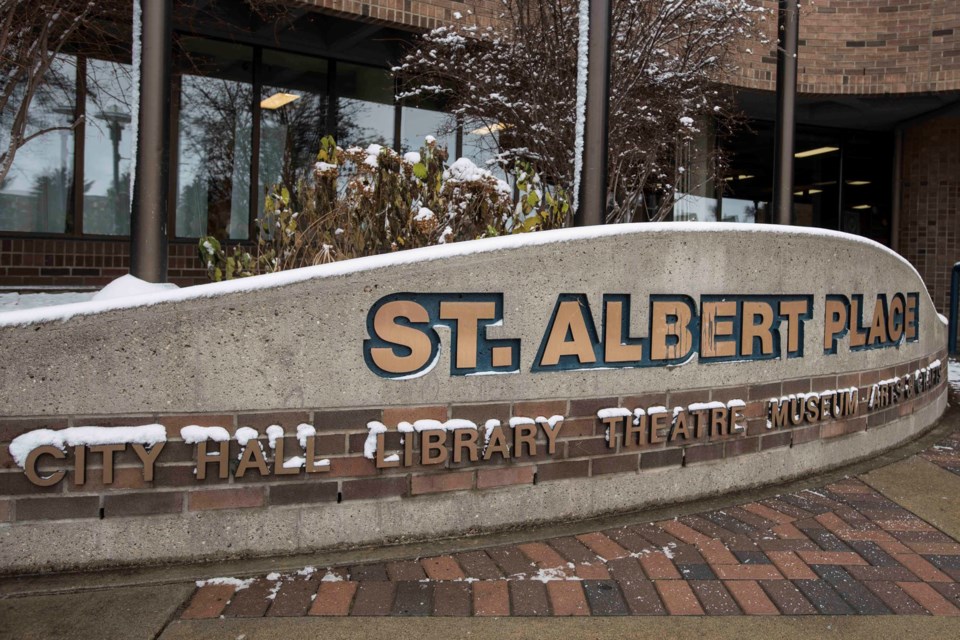A majority of St. Albert city councillors voted the development plan proposed for the city’s northeast through second and third readings Tuesday.
Only councillors Natalie Joly and Mike Killick voted against the Northeast Area Service Plan (ASP), siding with city managers who still oppose it.
They say the ASP doesn’t agree with the overarching municipal development plan (MDP), titled Flourish. That document already includes approved neighbourhoods elsewhere in the city with room for 25,000 new residents.
To become developable, the northeast needs more sewer capacity, an investment that will probably be on the scale of the $70-million servicing of the Lakeview Business District in the southwest at the end of 2024. Such work has not been approved by city council.
City staff say directing growth to the west, where infrastructure service already exists and where there is enough residential zoning to accommodate the next quarter-century of growth, is a more sustainable approach.
Those on the winning side of the 5-2 Feb. 4 vote, like Coun. Wes Brodhead, worry about putting up a metaphorical “stop sign” in front of developers. He was among those who want to harness some of the rapid growth taking place elsewhere in the province and the country.
“The fact that we would say 'no' and put a moratorium on growth is puzzling at best for me,” he said. “Big things are happening and we can be a part of that. It doesn’t all have to go to Airdrie (or) Beaumont.”
Mayor Cathy Heron said she is comfortable with having an ASP on the books that won’t be serviced immediately, whether it agrees with the MDP or not.
“I don’t see it as putting a stop sign up on growth in St. Albert or calling it a non-growth area,” she said. “It’s a future growth area, it’s about timing.
“I’m comfortable having that next phase of certainty for the northeast that it is a future growth area.”
Coun. Sheena Hughes couldn’t wait to vote the plan through “before we change our minds."
“The current strategy is extremely flawed and it’s extremely small thinking,” she said. “The idea that 1.3 per cent growth is acceptable is staggering. We are the slowest-growing city in the capital region.
“We need to recognize that changing this and stopping developing from occurring leaves us with a very bad image.”
Joly said she couldn’t disagree with Brodhead more. Flourish is the product of a lot of thoughtful work by professionals including planners and elected officials.
She said she just received an inquiry from a resident who recently moved into the new Cherot neighbourhood and was surprised to discover the bus service his wife relies on doesn’t reach them yet because Cherot isn’t populous enough yet to justify a route expansion.
“The impact of failing to grow strategically is that these kind of issues are compounded,” she said. “The quality for our residents declines. We’re seeing this in many communities (that are) experiencing crippling rates of growth where capital investment can’t keep up without increasing taxes in a way that hurts our residents.”
Killick worries the new ASP will lead to “more urban sprawl into farmland in the northeast."
“While they say we’re saying 'no' to northeast servicing, we’re actually saying 'yes' to our plan,” he said. “There’s only so much growth to go around.”
In one of its last official acts, the Edmonton Metropolitan Region Board (EMRB) voted to approve the northeast ASP, which was referred up because of its non-compliance with the city’s MDP.
No other EMRB members submitted an appeal before a Jan. 7 deadline. The EMRB board voted Jan. 23 to dissolve and cease operations by March 31.
In its decision to bless the ASP, the EMRB noted the plan includes wildlife corridors to minimize conflict with humans, a mix of residential and employment-supporting zones, and policies to support the continuation of agricultural activity on land until urban development takes place.
“With a mixture of residential, commercial, employment, mixed use, schools, and park uses, the plan supports the principles and policies of complete communities described in the (EMRB) growth plan,” the decision reads. “In addition, the plan provides urban agriculture policies to promote local food and value-added agriculture for the regional food system.”



